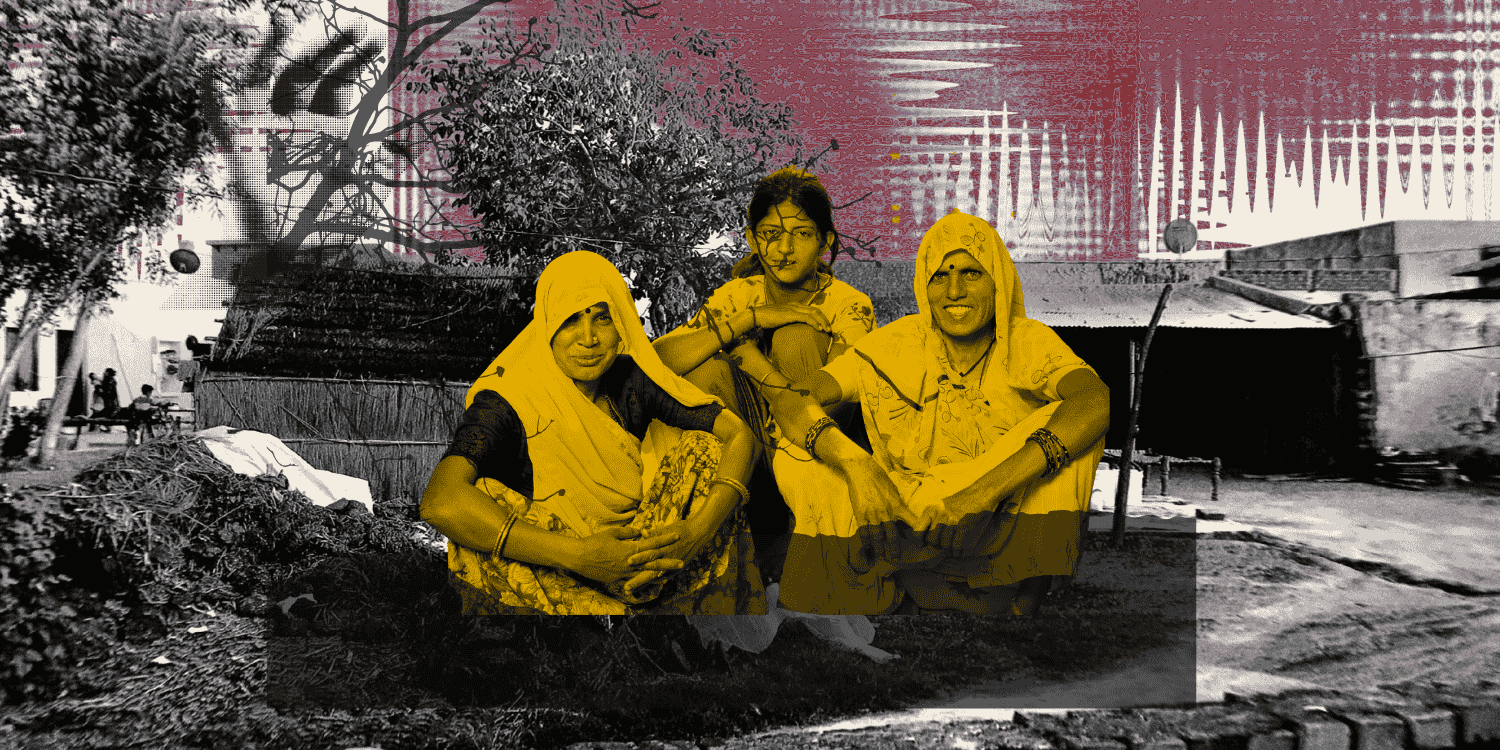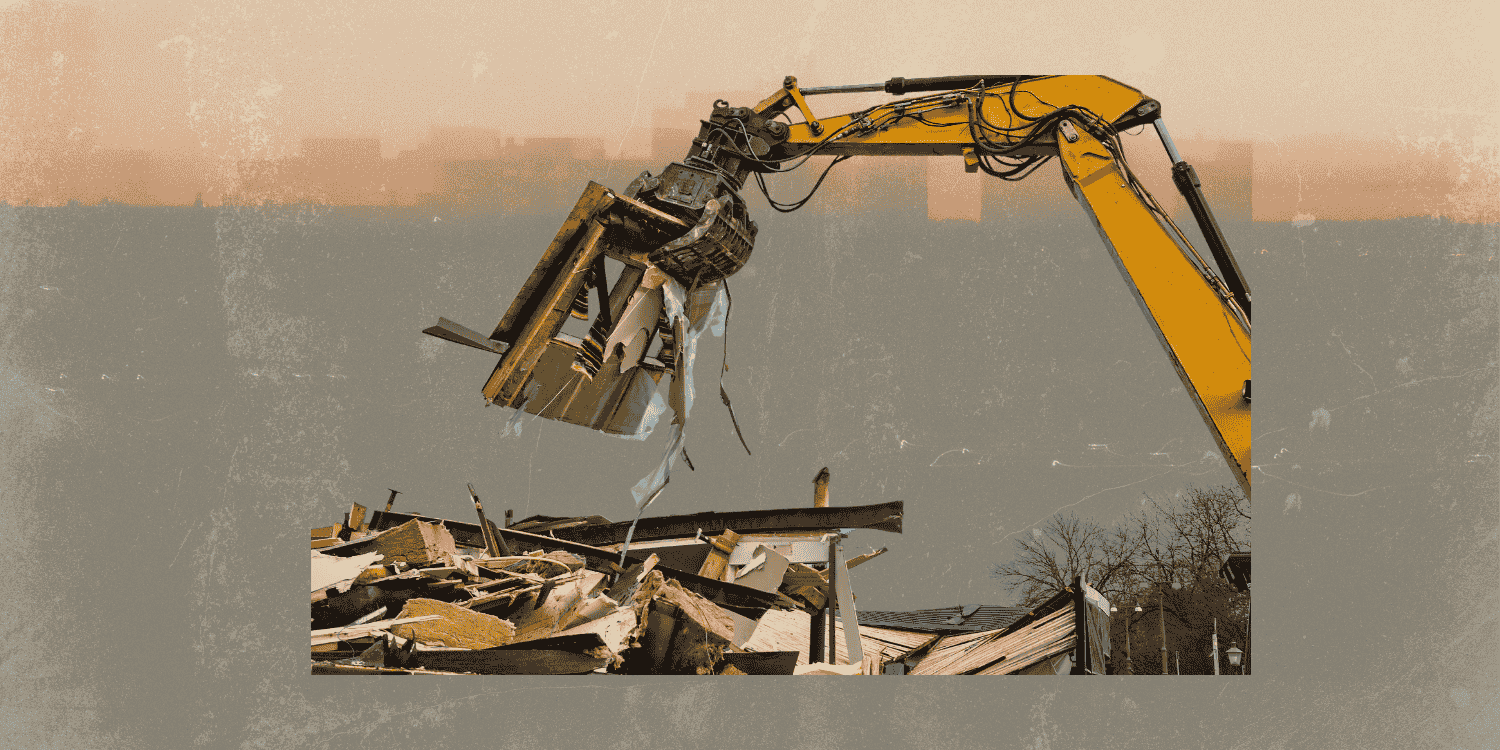Introduction
When we think of the term “forced eviction”, it often leads to a visual characterisation of something violent, including the use of physical force or encompassing an ensuing struggle. It is formally defined as “the permanent or temporary removal against the will of individuals, families, and /or communities from the homes and/or land which they occupy, without the provision of, and access to, appropriate forms of legal or other protection”. Evictions are forced not only in cases where individuals and families are being removed from a given settlement by other entities but also in situations where their residence becomes inhabitable or inaccessible due to major events like a riot or a drought-induced loss of food and water supply. It also means that this phenomenon does not automatically imply the use of physical force per se, but can be attributed to larger structural problems and institutional failures depending on the nature of the issue. Some of the most common reasons which underlie this phenomenon include evictions spurred by different development projects (construction of roads, bridges, dams), mining activities, slum clearance in ghettoised settlements, organisation of international cultural, diplomatic and sports events, natural disasters (cyclones, floods, earthquakes) and so on.
Whichever the cause, it is well-established that forced evictions lead to a wide host of human rights violations under international conventions (Office of the United Nations High Commissioner for Human Rights, 2014). These not only include rights centred on health, education, work and security, but also freedom from cruel, inhuman and degrading treatment. Even amidst the individuals, families and communities who have often faced the brunt of this personal catastrophe, there are certain groups which possibly end up suffering even more than the rest—women, children, the elderly and the differently abled, among others. The higher the intersection of socio-economic vulnerabilities with these groups, the deeper the marginalisation and impact of such events. Some recent examples of housing evictions and consecutive displacement include a growing trend in India of informal settlements and slum dwellings being brought down by bulldozers as a part of demolition campaigns by the local authorities fueled by a variety of arbitrary reasons. This piece focuses on the women victims of eviction and displacement carried out in Delhi as a result of this method and explores how these lives dismantled by such incidents can look like.
The Disproportionate Burden of Displacement
One of the earliest forced evictions to gain a lot of attention in Delhi was the government’s plan to convert 100 acres of land on the banks of Yamuna for a promenade, and resultantly to remove 35,000 families who lived in “unauthorised settlements” on that stretch. Literature on the same event has shown that in a build-up to the demolitions in the year of 2004, the entire population living in those settlements since the past 3 decades, mostly consisting of Muslim families, were collectively demonised as “illegal migrants from Bangladesh”, “beggars” and “petty criminals”. With public apathy fanned on by the strong involvement of the print media, the entire settlement was razed within 24 hours, and the residents were consecutively subjected to a range of violence and abuse – physical, psychological and financial (Menon-Sen 2006). Over the years, the national capital has seen a steep rise in a spate of demolitions carried out by authorities, intensified especially around the beautification drive prior to the G20 events.
In a recent 2022 study, the Housing and Land Rights Network (HRLN) undertook an assessment of the living conditions of the Gadia Lohar community in Mansarovar Park in Delhi after a forced eviction. This community is originally a travelling nomadic tribe hailing from Chittorgarh in Rajasthan and is recognised by their gadiyas (bullock carts), which serve both as a means of transportation and, sometimes, even as their homes. Historically, members of this community worked as ironsmiths, and now they have spread out to other occupations as well as other states. In Delhi, at an informal settlement where this community resided for years, multiple demolitions have been carried out from the years 2013 to 2017 without any rehabilitation plans or prior notice beyond a week’s time. As a result, the homes of 62 families were destroyed along with many of the community resources. Water supply became severely hit, with the 7 functional water taps serving the entire community wiped out. The Delhi Jal Board sends in a water tanker on a daily basis to the settlement, and the women are tasked with carrying 10-20 buckets of water for their families to meet all their needs.
The demolition also resulted in all of the electricity connections and metres getting disabled in the area, with homes being forced to make temporary arrangements for lighting at least one bulb per household. The complete loss of street lighting in common areas and paths have made it quite difficult for women and girls to move around in their neighbourhood, with a sharp spike in thefts and other crimes. The lack of electricity also compounds safety concerns faced by the women in the community while accessing toilets or bathing. Most of the women use paid public toilets located at a distance, which ultimately limits their use to once per day and never at night. The clearing out of makeshift bathing units by the authorities has led to women and girls being forced to bathe out in the open during the dark and fully clothed, due to safety concerns. Combined with inadequate sewage facilities in the area, the number of health problems among women has exacerbated and continues to grow in comparison to the rest of the community. This study has reported that the average monthly household expenditure on health has increased by 88% in the two years immediately after the eviction, with thyroid, brain fever, liver infection, and jaundice being illnesses that have witnessed the most amount of spending.
The situation is even more dire immediately after a forced eviction. After mass evictions in the Tughlakabad Fort Area in Delhi in 2023, which displaced thousands of families and left over 2.5 lakh people homeless, little could be salvaged with respect to any kind of belongings. Families were forced to shelter in makeshift tents with tarpaulin sheets for extended periods of time, which made the situation more precarious for women who become further vulnerable to acts of violence and harassment. After such an event, it can take a significant amount of time for families to gain the economic means to build back and retain access to even a fraction of the resources that they would previously use. Specifically, the extended loss of healthcare and sanitation facilities in the immediate aftermath of evictions has severe implications for pregnant or lactating women in demolished settlements. The stressful conditions of such a setting have been noted to induce early labour among some of the pregnant women, who have been forced to give birth out in the open without any medical care. It is important to note that these conditions of marginalisation are often heightened for vulnerable communities.
Based on the data collected by the National Eviction and Displacement Observatory, 36,486 houses were demolished in 2021, and 25,800 homes, just in the first half of 2022. Of these, 28% or more comprise households from historically marginalised groups in the country, with individuals mostly who are Muslims, or from Scheduled Castes, Scheduled Tribes, Other Backward Classes, and nomadic communities, or sometimes even an intersection of multiple identities stated. Most of these individuals also form a significant part of the informal sector, especially women, who earn their livelihoods as domestic workers and daily wage labourers, according to Savari Raj, secretary of the Delhi Domestic Workers Union. On an average, trade groups falling within the ambit of informal work grapple with irregular earnings, occupational health hazards and a persistent lack of social security nets. The intersection of the socio-economic background of women informal workers with the precarious nature of work they undertake to feed their families, position them as one of the most deeply disadvantaged and impacted groups in situations of eviction and displacement.
Evictions and Women Around the World
Certain global examples also help shed light on the kinds of challenges faced by women at large in public spaces and in an environment of displacement. Firstly, it has been reported that the prevalence of Intimate Partner Violence (IPV) is higher under such circumstances. A 2021 study by the World Bank comparing cross-country datasets posits the risks of IPV to be higher for forcibly displaced women—which would consecutively increase their vulnerability to poorer mental and reproductive health outcomes, unintended pregnancies and sexually transmitted diseases. However, given the covert nature of this abuse, the need for better identification and meting out of stronger punitive measures has always elicited debates among civil society groups. Evidence from Indonesia has also shown that sanctioned displacement by the Government and rehabilitation of the residents from kampungs (informal housing) to rusunawa (rented public housing) also aids the social conditioning of women to restrict their roles as stay-at-home wives or mothers. Individuals who are entrusted with managing these blocks of rusunawa housing units play a strong role in altering the social spaces traditionally taken up by the women evictees to build social networks and engage in shared bonding. These managers, reportedly to reduce public inconvenience, have often been noted to instruct women to follow certain guidelines on cleanliness and have even restricted their areas for partaking in communal activities, like cooking or washing clothes. More so, women’s mobility is further limited to their own homes in the new public housing due to its excessive distance from their previous sites or work or businesses, leading to multiple economic losses and rising liabilities with the sudden need to pay monthly rent. These stories also find relevance back home in India and help us draw parallels between the different manifestations of patriarchy and its interaction with public policy and administration.
Understanding the Displaced and Invisibilized
According to the Census data (2011), at least 6.5 crore Indians live in slums in the country. Slums are often regarded as a mark of urban poverty, with inadequate access to clean and safe water, sanitation, and security, with poor quality housing structure and overcrowding. Women and their families coming from specific informal sector trade groups form such concentrated settlements (authorised and unauthorised) near their place of work (factories, construction sites, markets, etc.) and continue to live in such conditions as a result of being trapped in a perpetual cycle of poverty. Therefore, when forced evictions take place in these areas, especially through state-sanctioned demolitions, it does not feature as much in public discourse. Simply put, if one considers the displacement of a community as a result of a natural disaster, in comparison to the same kind of displacement but instead due to the removal of an “illegal encroachment” by authorities; there is a severe disparity in the response elicited from external stakeholders between both instances. Since the inhabitants of these settlements live on the ‘margins’, both literally and figuratively, their concerns and struggles often do not find their way into the general public imagination. Questions around the legality and legitimacy of their habitation automatically put them at a disadvantage before an argument can even be made about their right to housing. Having sympathy for someone who lost their home to a flood comes easily, perhaps because of the larger-than-life scope of things. It’s important to also render a similar kind of consideration for a family who lived on a piece of land that they were not supposed to because of their circumstances and hence had their home broken down. Ultimately, the right to shelter is an integral component of the right to life under Article 21 of the Constitution of India.
Under the aegis of the Pradhan Mantri Awas Yojana (PMAY) scheme, different states put development-led rehabilitation policies in place to make “Indian cities slum-free by 2022”. The Delhi government has its own Delhi Slum and JJ Rehabilitation and Relocation Policy, 2015, under which the residents of slums/informal settlements are eligible for rehabilitation only if the slum came up prior to January 1, 2006, with individual settlements in the same being built before January 1, 2015. Any informal settlement built after this date would be removed without any form of relief or rehabilitation to its members. The slum must also have a minimum of 50 households, and each household needs to possess a list of 12 mandated documents in order to be eligible for alternate housing. The 2019 Delhi High Court judgement of Ajay Maken v. Union of India ruled that a comprehensive survey needs to be carried out by the authorities across different informal settlements, with complete stakeholder participation by the potential evictees and for a draft protocol to be strictly followed for rehabilitation of the residents before their eviction. Some examples include the lack of government protocols followed in the evictions planned near railway land, Sundar Nagri, and Nizamuddin in Delhi. Notwithstanding the several bottlenecks faced in securing rehabilitation housing through endless wait times and hefty deposits that are too much for indigent households to bear, the situation is even more bleak for individuals and families who are completely left behind in this process.
Looking Deeply and Looking Ahead
As of now, the Delhi Urban Shelter Improvement Board has still not been able to conduct a complete survey of the 675 slums that it published as being eligible for rehabilitation under the 2015 policy. Even if we consider this list as static amidst the rising migrant worker settlements each year in the national capital, the plight of women in this whole exercise is completely invisible, with no mechanisms in place to account for gender-disaggregated data pre and post-eviction. Evictees are generally shifted to transit camps in terrible conditions on the outskirts of the city or put up in overcrowded shelter homes, while a majority aren’t even accommodated to this extent post-demolition. Women, being located at a great distance from their original sites of work, are forced to give up employment and subsequently struggle to feed their families. Their children are compelled to shift schools right in the middle of the school year, and often, the girls would drop out to help their mothers at home. Poor conditions of sanitation and irregular access to water supply would continue to exist, which would debilitate women’s capacity to maintain good health amidst the caregiving roles within the household. Therefore, it is extremely pertinent for the current policy to have a clear gender lens while formulating options for the rehabilitation of a cluster of informal settlements.
While giving a week’s notice is the minimum stipulated period as per regulations prior to eviction, the length of notice must also incorporate the needs of the most vulnerable groups within that settlement. For example, some gender-sensitive policy considerations can involve clear exemptions made during evictions in the case of pregnant women and recent mothers, the sick and elderly, and single women-headed households. In case the whole settlement is being removed, these groups should at least be assisted a couple of months in advance, and relocated to nearby government provided housing with proper access to basic resources. Civil society organisations can play a bigger role in this process to ensure the effective identification of such needy groups and the fulfilment of their needs at the time of forced evictions. Currently, any individuals (men, women and children) who live in slums constructed before January 1, 2006 are eligible for rehabilitation. However, administrative requisites expected from such entities need to be flexible and accommodative of the living conditions of most of the settlement. If a poor family is expected to fulfil multiple documentation processes in a bid to secure their spot in rehabilitation arrangements by the government, they will likely fail to do so. Provisions should be made to ensure that both the husband and the wife in the household can be regarded as the head of the household individually, and one of multiple identification proofs (aadhar card/ration card/labour card/artisan card etc.) of either can be sufficient to move ahead with the process.
Any accommodation, even temporary, for these residents must also ensure regular access to clean, safe drinking water and toilet facilities. This area should also be within the ambit of antenatal care and other services provided by the ASHA workers in the locality, as well as have access to cheap and effective healthcare facilities within a close radius. The possible loss of livelihood should be an eventuality that is well-accounted for and minimised to the greatest degree, with respect to both the men and the women in the family. In case it is apparent, a fixed cash transfer should be provided to families for six months up to a year post-eviction, with additional aid to help them connect with alternate work opportunities.
The Ministry of Housing and Urban Affairs should set up a central monitoring agency that conducts surveys and collects annual household data related to forced evictions. Data from the E-shram portal managed by the Ministry of Labour and Employment should also be utilised to help account for the number of informal workers impacted nationally by this phenomenon, which might also lead to frequent loss of employment among this group. Lastly, grievance cells should also be set up by the ministry at the district level, where evictees can register their complaints regarding inconsistencies in the implementation of rehabilitation measures prior to demolitions. Each grievance cell should be given the administrative authority to temporarily halt evictions in case of regulatory violations, which the complaint redressal mechanism will help identity and track. All of these initiatives would help continuously measure the progress of the displaced communities, better highlight gaps in the process and ensure reform measures are driven by evidence and empathy.






